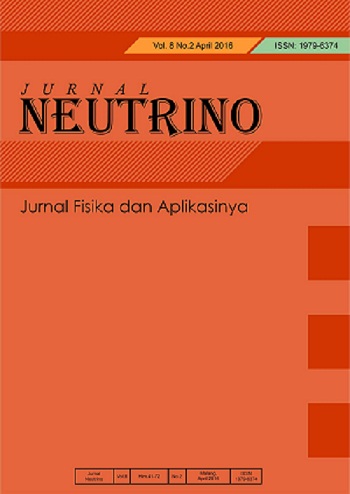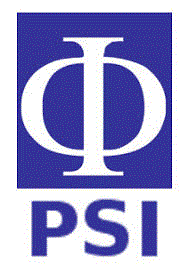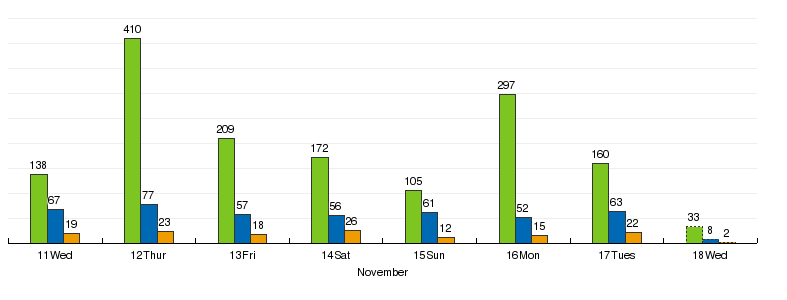ANALYZING EEG SIGNALS FOR STRESS DETECTION USING RANDOM FOREST ALGORITHM
Abstract
Keywords
Full Text:
PDFReferences
- O’Connor DB, Thayer JF, Vedhara K. Stress and Health: A Review of Psychobiological Processes. Annual Review of Psychology. 2021 Sep 4;72(1):663–88.
- Queensland Centre for Mental Health Research (QCMHR). Indonesia – National Adolescent Mental Health Survey (I-NAMHS) Report (Bahasa Indonesia) [Internet]. qcmhr.org. 2023. Available from: https://qcmhr.org/wp-content/uploads/2023/02/I-NAMHS-Report-Bahasa-Indonesia.pdf
- Arsalan A, Majid M, Butt AR, Anwar SM. Classification of Perceived Mental Stress Using A Commercially Available EEG Headband. IEEE Journal of Biomedical and Health Informatics. 2019 Nov;23(6):2257–64.
- Li R, Liu Z. Stress detection using deep neural networks. BMC Medical Informatics and Decision Making. 2020 Dec;20(S11).
- Priya TH, Mahalakshmi P, Naidu V, Srinivas M. Stress detection from EEG using power ratio. 2020 International Conference on Emerging Trends in Information Technology and Engineering (ic-ETITE). 2020 Feb;
- Pandey P, Miyapuram KP. Nonlinear EEG analysis of mindfulness training using interpretable machine learning. 2021 IEEE International Conference on Bioinformatics and Biomedicine (BIBM). 2021 Dec 9;
- Malviya L, Mal S, Lalwani P. EEG Data Analysis for Stress Detection. 2021 10th IEEE International Conference on Communication Systems and Network Technologies (CSNT). 2021 Jun 18;
- Tasyakuranti AN, Sumarti H, Kusuma HH, Istikomah I, Prastyo IS. ANALYSIS OF THE EFFECT OF ISTIGHFAR DHIKR TO ADOLESCENT ANXIETY AT BETA WAVE ACTIVITY USING ELECTROENCEPHALOGRAM (EEG) EXAMINATION. Jurnal Neutrino:Jurnal Fisika dan Aplikasinya [Internet]. 2022 Sep 26 [cited 2024 Jul 15];15(1):31–7. Available from: https://ejournal.uin-malang.ac.id/index.php/NEUTRINO/article/view/17270/9748
- Sen D, Bhupati Bhusan Mishra, Prasant Kumar Pattnaik. A Review of the Filtering Techniques used in EEG Signal Processing. 2023 7th International Conference on Trends in Electronics and Informatics (ICOEI). 2023 Apr 11;
- Tharwat A. Independent component analysis: An introduction. Applied Computing and Informatics. 2018 Aug;17(2).
- Zhou R, Han J, Li T, Guo Z. Fast Independent Component Analysis Denoising for Magnetotelluric Data Based on a Correlation Coefficient and Fast Iterative Shrinkage Threshold Algorithm. IEEE transactions on geoscience and remote sensing. 2022 Jan 1;60:1–15.
- Rousseeuw PJ, Hubert M. Robust statistics for outlier detection. Wiley Interdisciplinary Reviews: Data Mining and Knowledge Discovery. 2011 Jan;1(1):73–9.
- Yi Wen T, Mohd Aris SA. Electroencephalogram (EEG) stress analysis on alpha/beta ratio and theta/beta ratio. Indonesian Journal of Electrical Engineering and Computer Science. 2020 Jan 1;17(1):175.
- Loza CA, Principe JC. EEG Models and Analysis. Springer eBooks. 2021 Jan 1;1–36.
- Su C. Heart Rate Variability Feature Selection using Random Forest for Mental Stress Quantification [Internet]. spectrum.library.concordia.ca. 2020. Available from: https://spectrum.library.concordia.ca/id/eprint/987471/
- Mohammad Zoynul Abedin, M. Kabir Hassan, Hajek P, Mohammed Mohi Uddin. The Essentials of Machine Learning in Finance and Accounting. Routledge; 2021.
- Tangirala S. Evaluating the Impact of GINI Index and Information Gain on Classification using Decision Tree Classifier Algorithm. International Journal of Advanced Computer Science and Applications. 2020;11(2).
- Boateng EY, Otoo J, Abaye DA. Basic Tenets of Classification Algorithms K-Nearest-Neighbor, Support Vector Machine, Random Forest and Neural Network: A Review. Journal of Data Analysis and Information Processing. 2020;08(04):341–57.
DOI: https://doi.org/10.18860/neu.v17i1.28471
Refbacks
- There are currently no refbacks.
Copyright (c) 2024 Fi Imanur Sifaunnufus Ms, Fitra Abdurrachman Bachtiar, Barlian Henryranu Prasetio

This work is licensed under a Creative Commons Attribution-NonCommercial-ShareAlike 4.0 International License.
Published By:
Program Studi Fisika Fakultas Sains dan Teknologi Universitas Islam Negeri (UIN) Maulana Malik Ibrahim Malang, Indonesia
B.J. Habibie 2nd Floor
Jl. Gajayana No.50 Malang 65144
Telp./Fax.: (0341) 558933
Email: neutrino@uin-malang.ac.id
This work is licensed under a Creative Commons Attribution-NonCommercial-ShareAlike 4.0 International License
View My Stats











